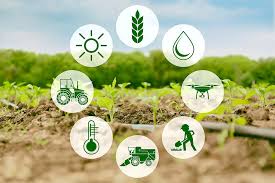GREEN CATALYSIS IN ORGANIC SYNTHESIS ADVANCING SUSTAINABLE PATHWAYS FOR ECO-FRIENDLY CHEMICAL TRANSFORMATIONS
Keywords:
Green catalysis, organic synthesis, sustainable chemistry, solvent-free reactions, nano-catalysts, mechano- chemistry, photo-redox catalysis, metal-organic frameworks, atom economy, environmental impactAbstract
The development of catalysis processes in green chemistry brought in new biocatalytic processes which were less harmful in comparison to the traditional catalytic methods used. The research investigates the use of catalysis methods that are sustainable and are able to improve efficiency, selectivity, and atom economy while minimizing the generation of toxic waste and dangerous byproducts manufactured. Some brand classes of green catalysts are reviewed and these include biocatalysts, organo-catalysts, heterogeneous catalysts, and metal-organic frameworks (MOFs) Or supercritical CO₂ and water are used as reaction media for solvent-free and alternative solvent-based catalysis, which also significantly cut down the use of volatile organic solvents. Breakdown of larger particles by vigorous agitation to form new bonds (mechano-chemical activation) has been enabled. The use of newer technologies has also widened the horizon of green chemistry with the use of renewable energy in performing oxidation such as in photo-redox catalysis and electro-catalysis or in reduction and cross coupling reactions using nano- catalystsWhile it does have its advantages, there is still unsolved issues in scalability, recyclability of catalysts, and their implementation in industry. Improvements in AI technology for catalyst design and sustainable nanotechnology will be required in order to incorporate green catalysis into mass chemical production. The main aim of this research is to demonstrate the role of green catalysis in achieving sustainable organic synthesis, the reduction of chemical processes, and the lowering of the effects industrial chemistry has on the environment.

















